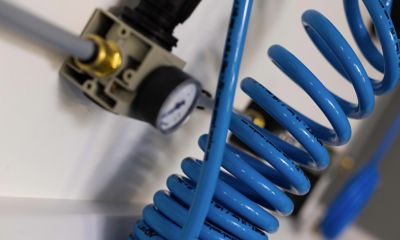Moisture can cause corrosion in pipes, valves, and other components, leading to costly repairs and replacements.
Moisture in air compressors is a common issue that can significantly impact the efficiency and lifespan of your equipment. In this blog post, we will delve into the intricacies of moisture in air compressors, explore various methods to remove it, and answer common questions related to this topic.
Why Moisture in Air Compressors is a Problem
Moisture in air compressors can lead to a host of issues, including corrosion, contamination, and reduced efficiency. When air is compressed, its temperature rises, allowing it to hold more moisture. As the air cools, this moisture condenses, forming water droplets that can damage your equipment and compromise the quality of your end products. Understanding the root causes of moisture in air compressors is the first step in effectively managing it.
How Moisture Forms in Air Compressors
Air inherently contains moisture as water vapor, with the concentration of this moisture varying based on the air's temperature and relative humidity. When air undergoes compression followed by cooling, the water vapor present within the pressurised air will begin to condense.
This process is influenced by several factors, including:
- Temperature: Higher temperatures increase the air's ability to hold moisture.
- Humidity: Higher humidity levels result in more moisture in the air.
Effects of Moisture in Compressed Air Systems
Moisture in compressed air systems can have several detrimental effects, including:
Moisture can reduce the efficiency of pneumatic systems, air motors, and valves, leading to increased energy consumption and operational costs.
Moisture can promote the growth of microorganisms and mold, which can further contaminate the system and end products.
How to Remove Moisture from Air Compressor
Condensate, the water removed from compressed air, often contains oil particles/vapor and other contaminants. Proper disposal of condensate is crucial to avoid environmental fines and reputational damage. Installing oil/water separators and following environmental guidelines can help ensure responsible waste management.
Aftercoolers are heat exchangers that cool the compressed air, causing moisture to condense and be removed from the system. They are typically installed downstream of the compressor and can significantly reduce the amount of moisture in the air.
Refrigerant dryers cool the compressed air to a temperature where moisture condenses and can be removed. These dryers are effective in achieving low pressure dew points from 4°C to 7°C (39.2°F to 44.6°F) and are suitable for most industrial applications.
Adsorption dryers use a desiccant material to absorb moisture from the compressed air. These dryers can achieve very low dew points (from -40°C to -70°C / from -40°F to -94°F), making them ideal for applications requiring extremely dry air.
Condensate drainers effectively remove condensed water from the system, preventing it from accumulating and causing damage.
Separators work by segregating water and oil from the compressed air, ensuring that only dry and clean air passes through the system.
Common Questions Related to Moisture in Air Compressors
Condensation can be removed by using a dryer to keep out the moisture before it reaches downstream equipment, and seeking expert advice for personalised solutions.
Dryers, such as refrigerant or adsorption dryers, play a vital role in removing moisture from compressed air before it reaches downstream equipment, ensuring that the air used is dry and free from condensation.
Removing condensation from compressed air is crucial to prevent equipment damage and operational issues that can arise from excess moisture in the system.
Reach Out to Us for Expert Insights on Managing Compressed Air Humidity
Understanding how moisture forms, its effects, and how to manage it is crucial for maintaining the quality and efficiency of your compressed air system. If you have any questions or need personalised assistance, don't hesitate to contact the experts at ABAC Air Compressors for reliable and innovative solutions.












